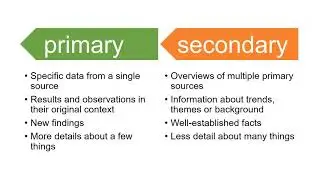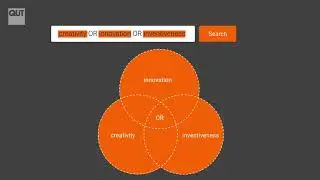Primary vs secondary sources
This video is taken from QUT Library's 'Study Smart: information research and literacy skills' tutorial Module 1.3.1 Primary and secondary sources http://studysmart.library.qut.edu.au/...
This video is licensed by QUT Library under a Creative Commons Attribution-NonCommercial-ShareAlike International 4.0 License (CC-BY-NC-SA)
Transcript:
Before you start looking for information for your assignment, it helps to know what kinds of information are available.
One of the main differences between types of information, is the difference between information from a Primary Source, versus information from a Secondary Source.
Primary sources of information come directly from the source of that information. This includes:
• journal articles or reports that describe original research
• records of personal experiences like diaries or autobiography
• newspaper articles that report the writers own investigations or observations
• photographs, audio recordings, or creative works like music or paintings
• raw data and statistics
• and primary sources of the law, including Statutes and law reports.
Secondary sources of information analyse, interpret or comment on primary sources. Secondary sources include:
• encyclopedias
• journal articles that review the work of other authors, like systematic reviews or literature reviews
• most books are secondary sources, as they provide overviews or summaries on a topic
• newspaper articles that give commentary, or opinion, often called editorial, and
• market or economic analysis.
Why distinguish between primary and secondary?
There are times when one kind of information will be more relevant to your assignment than the other - if you know that the information you need is going to come from a secondary source, don't waste time looking for it in a primary source!
Primary sources will give you:
• specific data
• results and observations in their context
• more detail about only a few things.
Secondary sources will give you:
• overviews of multiple primary sources
• information about trends or themes
• background information or well-established facts
• less detail, about many things.
So, looking at our example question, Primary sources might give us:
• information about how an AI technology was implemented at a specific library, or
• data on customer responses to AI technology used in libraries.
Whereas Secondary sources might give us:
• an overview of different types of AI technologies that a library might use
• trends in the library sector around adopting AI technologies.
• literature reviews on the use of AI in libraries, or other sectors.
So keep in mind while researching, whether you need primary or secondary sources, and your research process will be quicker and easier.



















